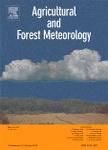版权所有:内蒙古大学图书馆 技术提供:维普资讯• 智图
内蒙古自治区呼和浩特市赛罕区大学西街235号 邮编: 010021

作者机构:CSIRO Ecosyst Sci Hobart Tas 7001 Australia CRC Forestry Hobart Tas 7001 Australia CSIRO Ecosyst Sci Wembley WA 6913 Australia CRC Forestry Wembley WA 6913 Australia CRC Future Farm Ind Crawley WA 6009 Australia WA Dept Environm & Conservat Dwellingup WA 6213 Australia
出 版 物:《AGRICULTURAL AND FOREST METEOROLOGY》 (农业和林业气象学)
年 卷 期:2011年第151卷第12期
页 面:1568-1579页
核心收录:
学科分类:0907[农学-林学] 09[农学] 0706[理学-大气科学] 0901[农学-作物学]
基 金:Albany Plantation Forests Limited Australian Bluegum Plantations Hansol PI Gunns WA Plantation Resources WA Department of Environment and Conservation Forest Products Commission
主 题:Soil water deficit E. globulus CABALA Process-based modeling
摘 要:Eucalyptus globulus plantations are thought to use stored soil water when planted on ex-agricultural sites, and we hypothesized that this is likely to affect productivity of 2nd and later rotation plantations because the next rotations have access to less stored soil water. We used a combination of experiments and modeling to understand the impact of E. globulus plantations on soil water stores over the first rotation and early second rotation. The experiments were conducted at 3 contrasting sites in southwestern Australia, and modeling was used to extrapolate the results to other climatic zones. Soil water dynamics were assessed to 8 m depth under a range of management options, including spacing and nitrogen addition in the first rotation, and coppice or seedling re-establishment in the 2nd rotation. We found that soil water stores declined over the course of the first rotation at all sites, with some (incomplete) annual replenishment evident at the higher rainfall sites, but less replenishment at depth, especially in the lower rainfall sites. Only the wettest of the 3 sites fully replenished with soil water after harvest of the 1st rotation. Plots with higher stocking rates had higher soil water depletion early in the rotation, although by the end of the first rotation, most treatments had similar soil water deficits of around 800 mm at all of the sites. Of the sites that were responsive to N fertilizer, there was a strong differential in the degree of soil water deficit between N treatments, with N fertilized trees using more of the soil water store each year, but also producing more wood. A process-based plantation growth model, CABALA, was found to be adequate for predicting soil water dynamics under the range of management options that we explored, and we applied it to understanding the potential replenishment of soil under 2nd rotation plantations in a range of climatic zones within the E. globulus estate in south-western Australia. This modeling showed that